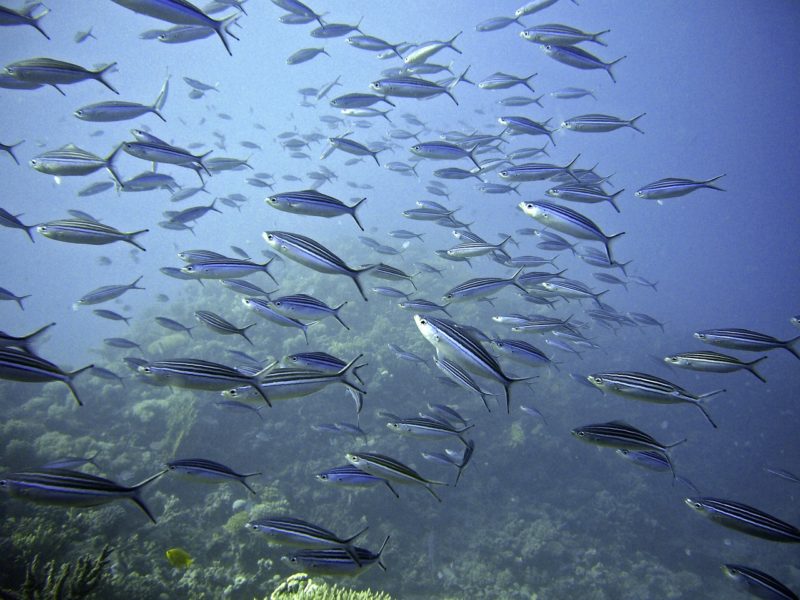Oceanic Mysteries and Discoveries

According to estimates made by NOAA’s National Geophysical Data Center, the world’s oceans consists of 321,003,271 cubic miles of water. It has also been acknowledged that they cover 71 per cent of Earth. So, what oceanic mysteries and discoveries can be found within these vast spaces?
Life’s Diversity Below the Surface
There are already hundreds of thousands of known species which exist in the world’s oceans. However, claims by scientists state that many more forms of marine life are yet to be discovered. On top of this, there are 4,000 species of coral reef fish to be found too, which is close to a quarter of all of the world’s marine fish species. Just be aware that a milliliter of ocean water also contains close to 1 million bacteria and 10 million viruses.
Marvels of Oceanic Landscapes
Keeping with nature, the largest living structure on Earth finds its home in our ocean. This is the Great Barrier Reef — it measures around 2,600 km and is so huge that it can be spotted from the Moon.
Meanwhile, the Mariana Trench is the deepest known area across the ocean floor. Located in the western Pacific Ocean and to the east of the Mariana Islands, the deepest point found here measures in at an estimated 10,984 meters. The average depth of the Earth’s oceans is also 3,720 meters.
Then there’s the Mid-Oceanic Ridge — the world’s longest mountain range. This mountain chain stretches for more than 56,000 km across and covers parts of the Atlantic Ocean, the Indian Ocean and the Pacific Ocean. Meanwhile, Earth’s highest mountain in the ocean is the Mauna Kea. Found off the coast of Hawaii, the mountain rises for 10,203 meters from the ocean floor, with 4,207.3 meters viewable above sea level.
Further examples of geographic wonders which are based in our oceans include a series of underwater volcanoes that explode with mud and methane as opposed to lava, and brine pools — these can all be discovered in the ocean close to the Gulf of Mexico. There’s also underwater hot springs found across the Earth’s oceans, where water with temperatures of 350°C shoot out — that’s hot enough to melt lead.
Hidden Riches and Historical Remnants
The number of artifacts and remnants found in every museum across the globe is much less than the number to be found in the Earth’s oceans. There is almost 20 million tons of gold within the Earth’s oceans too — if all which was suspended was mined, there would be enough to give each person on the planet around 9 pounds of gold.
The ocean floor has also gathered an estimated $60 billion in sunken treasure. On top of all of this, scientists have predicted there is as much as 50 quadrillion tons of dissolved solids contained there too. Calcium salts, magnesium salts, potassium salts and sodium salts make up the bulk of this huge figure.
Undersea Networks and Global Commerce
Around 50 per cent of all communications that take place across nations is made possible by the underwater cables found in the Earth’s oceans — subsea technologies included. Furthermore, over 90 per cent of all trade between countries are performed by ships.
Conclusion
The world’s oceans are a treasure trove of life, mysteries, and invaluable resources. From their vast biodiversity to awe-inspiring geographical wonders like the Great Barrier Reef and the Mariana Trench, they hold unparalleled beauty and extremes. These deep waters safeguard hidden treasures, historical remnants, and essential communication channels, playing a vital role in global trade. As we continue exploring their depths, the oceans’ significance in shaping our planet remains unmatched, making them an endless source of fascination and importance for humanity.
Sources
- https://www.natgeokids.com/uk/discover/geography/general-geography/ocean-facts/
- https://www.motherearthnews.com/nature-and-environment/nature/fun-surprising-facts-about-the-oceans
- https://www.savethesea.org/STS%20ocean_facts.htm
- https://www.factretriever.com/pollution-facts
Would you like to receive similar articles by email?





